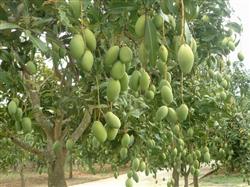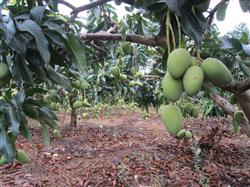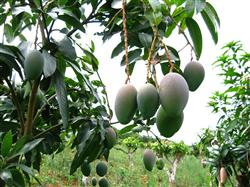How to control powdery mildew by planting mango?

How to control powdery mildew by planting mango? Powdery mildew is an important disease of mango at flowering stage, which harms inflorescences, young fruits and tender leaves. It occurs in Guangdong, Hainan, Yunnan, Guangxi and other producing areas in China. It has also been reported in India, Pakistan, Brazil, South Africa, Australia, Sri Lanka and other countries. Symptomatic mango powdery mildew mainly harms inflorescences and tender leaves, but also harms fruits. The symptoms are basically the same: some scattered white powdery patches first appear on the injured organs, then gradually expand and combine with each other to form a white powdery mildew layer. The tissue under the mildew layer gradually turns brown and necrotic. Inflorescence stalks and sepals are the most susceptible to disease. when these organs are susceptible, the bud stops developing and the diseased part is covered with powdery mildew layer; the base of the inflorescence turns brown first, and the branches turn brown gradually, causing falling flowers. The symptoms of the leaves appeared first from the back of the leaves, the powdery mildew layer mostly occurred in the midvein area, and the damaged leaves appeared light gray patches, and the damaged leaves deformed and fell early in severe cases. The fruit is mainly harmful to the young fruit, in severe cases, the powdery layer is often covered with the whole fruit surface, the skin of the diseased part becomes brown and cracked, and the damaged fruit is easy to fall off. Although the mildly diseased fruit can continue to grow, after the powdery mildew layer falls off, the diseased part shows purple patches, cracking and Lignification. The pathogen of mango powdery mildew is mango powdery mildew (Oidium mangiferae Berther), which belongs to half-known subphylum. The powdery mildew layer of the injured organs is the mycelium and conidia parasitized by the pathogen in the epidermis. The conidia are oval, unicellular, colorless and serial. There is no sexual generation. The disease of mango powdery mildew was overwintered by mycelium in infected older leaves and branches. When the environmental conditions were suitable in the next spring, the overwintering mycelium produced conidia and infected by airflow. Temperature is the main factor affecting the occurrence of mango powdery mildew. When the monthly average temperature is 21: 22 ℃, it is most suitable for the occurrence of powdery mildew. The effect of humidity is small, and it is beneficial to the occurrence of the disease when the relative humidity is about 70%, but it is also serious under drought conditions. If the application of nitrogen fertilizer is too much, the branches and leaves are soft and easy to be infected with powdery mildew. Zi Hua Mang, Gui Xiang Mang, Qiu Mang, Yuexi No. 1 and other varieties are more susceptible. Prevention and treatment method 1. Plant disease-resistant varieties. two。 Increase the application of organic fertilizer and phosphorus and potassium fertilizer, and control the excessive application of chemical nitrogen fertilizer. 3. Chemical control should be sprayed from the early stage of flowering, once every 15-20 days. The effective agents are: 20% trimethoprim EC 3000 times, 15% trimethoprim wettable powder 3000-4000 times, 40% polysulfide gel suspension 350500 times, 250,300 sieve sulfur powder and so on. It should be noted that sulfur agent should not be used when the temperature is too high, so as to avoid drug damage. Click to get more mango planting techniques click to get more fruit planting techniques
- Prev

What are the prevention and control methods of diseases and insect pests in mango trees?
What are the prevention and control methods of diseases and insect pests in mango trees? Please introduce the methods mango tree diseases and insect pests can refer to the following methods for control: first, agricultural control according to local conditions to select excellent varieties resistant or resistant to diseases and insect pests. A single variety should be planted on the same plot to avoid mixed planting of different mature varieties. In.。
- Next

How to control longicorn beetles by planting mango?
How to control longicorn beetles by planting mango? Please introduce the method that longicorn beetles belong to Coleoptera, Cerambycidae, which occurs in mango producing areas in southern China. By feeding on the branches with larvae, the growth of the damaged plants is weakened, and in serious cases, the damaged branches are easy to be broken by the wind. The insect occurs one generation a year, mainly by larvae.
Related
- Moge, come on! The staff of the peasant association in the producing area of cantaloupe were frightened when the crowd gathered.
- Causes and Solutions of low Fruit setting rate of Apple
- Symptoms and control measures of passion fruit virus disease
- Fruit growing lesson: how do apple orchards keep high yields?
- Can you build orchards in the mountains? What are the pros and cons?
- How to manage the coloring period of Crisson grape?
- This paper introduces the processing technology of two kinds of fig products.
- How much is a month for retired teachers in rural areas by 2020?
- How can strawberry planting increase sugar content? We should pay attention to management in many aspects.
- What are the cultivation techniques on how to improve the yield of golden fruit?

